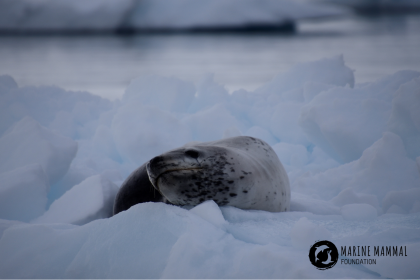Seals of Victoria
In Victoria we see two types of seals, the eared (otariid) and true (phocid) seals. There are a few differences between the two for you to look for if you see them in the wild:
AUSTRALIAN FUR SEAL (ARCTOCEPHALUS PUSILLUS DORIFERUS)
The Australian Fur seal is a type of eared seal, and also the largest of all fur seals around the world! They are mostly restricted to the islands of the Bass Strait, Tasmania and Southern Victoria. Amongst the 10 established breeding colonies found in Australia, six of them are found right here in Victoria!
There are visible differences in appearance between the males and females, known as sexual dimorphism. Females can weigh between 50-120kg and are a pale fawn-grey colour with a pale-yellow throat and underside. Males tip the scale at a hefty 220-360kg and are dark grey-brown in appearance with a pale underside, with a dark, coarse mane running over their necks and shoulders once mature.
The coat of the Australian fur seal has a woolly under layer which aids in trapping in air. With the seal’s layer of fat, this woolly undercoat creates a highly effective insulation and waterproofing system.
These seals are very skilled hunters, with their diet consisting almost solely on bony fish, squid and octopus. They have also been known to sneakily take advantage of fish farms and fishing net catches.
Fun facts:
An Australian fur seal can dive up to 150m.
They have similar teeth to dogs and bears.
Females will generally mate 6-10 days after giving birth to their pup.
LONG-NOSED FUR SEAL (ARCTOCEPHALUS FORSTERI)
Although the long-nosed fur seal (also a type of eared seal) is very similar to the Australian fur seal in appearance, there are slight distinguishable differences to aid in identification. This species tends to be smaller, with males weighing up to 100kg and females up to 35kg. They are also distinctively darker in colouration, have a more pointed snout, long pale whiskers and dark tan ears.
Their distribution ranges across Western Australia, South Australia and Western and Southern Tasmania. There are roughly 58,000 individuals of long-nosed fur seals in Australia presently and are considered vulnerable in Victoria.
These seals can dive deeper and at longer intervals than any other fur seal! They can reach depths of approximately 380m and can stay there for up to 15 minutes! Here, they hunt for squid, octopus, bony fish and even seabirds such as little penguins and shearwaters!
Males and females tend to communicate differently, with males barking or whimpering, and females growling or wailing.
Long-nosed fur seals are polygynous, meaning that the male will mate with multiple females, yet the female with only mate with that single male.
Fun facts:
Long-nosed fur seals can dive for up to 15 minutes at depths of up to 380m.
Long-nosed fur seals can live for up to 25 years.
LEOPARD SEAL (HYDRURGA LEPTONYX)
Leopard seals are a type of true seal and are very different to the fur seals mentioned above. They have ear holes instead of ear flaps, and are less agile on land due to their body form. They have a long body, with dark grey-silver colouring all over, dark grey flippers, and black spotting on their shoulder, throat and sides. They have long and broad front flippers and small hind flippers better equipped for locomotion in water. On land, they move in a lunging, caterpillar-like motion, and are much slower than eared seals.
An enormous flat head, long snout and very powerful jaws are defining features of a leopard seal. These apex predators have strikingly sharp teeth and are incredibly effective in hunting their favourite prey; penguins. They are noticeably larger than the fur seals found in Victoria, with males weighing up to 350kg and females up to 400kg!
Leopard seals are a solitary species and are strictly Southern Hemisphere-bound. They are generally found on pack ice surrounding Antarctica, as well as on Macquarie, Heard and the Falklands Islands.
Fun facts:
Scientists can tell what leopard seals eat by chemically analysing their whiskers.
Leopard seals are the only seals that will feed on endothermic animals, such as other seals.
They have also been documented to eat platypus.
Females give birth on ice.
Leopard seals can reach speeds of up to 37km/h.
Being predominantly solitary animals, females and males make long-distance calls to each other to come together for breeding.
Killer whales are leopard seals’ only predator.
REPORT A SIGHTING VIA TRAKMM
Whilst we would love to be on the water all the time, it’s unfortunately not possible. MMFs trakMM initiative allows the community using the waterways to log sightings of marine mammals. With your help in logging sightings, our researchers can record those sightings, identify species in our watery backyard and assess areas of significance for marine mammals.
Please note that marine mammals are protected and specific approach distances are in place to ensure our marine mammals (and your own) safety. See MMF Conservation page for specific regulations.





